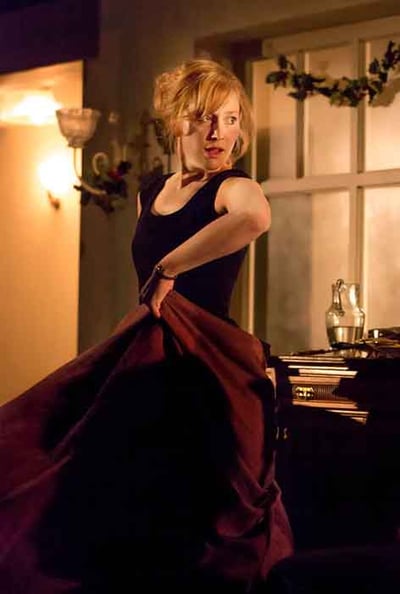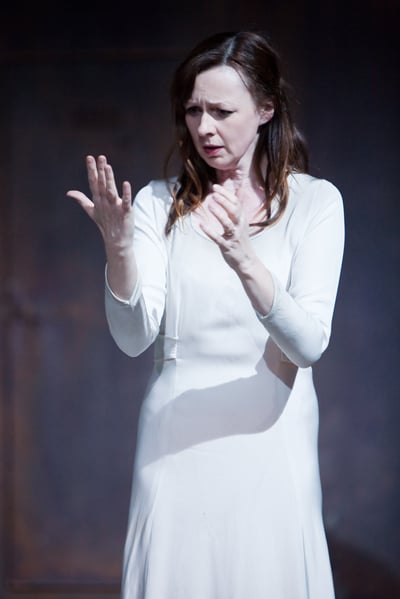15 March 2023
5 ways to use the arts to inspire your English students
Elizabeth Healy
English Teacher, LaGuardia High School, NYC
Not an actor? Teaching students who have never been on stage? Facing a group of slouching teens riveted in their chairs? No problem. Here are five entry-level techniques to infuse the arts in your literature classroom and help students show you what they know and—fingers crossed—enjoy their reading a bit more. I have personally used all of these techniques and find this is what helps kids buy into our studies and get excited. While I do teach students who are studying acting, I also teach theater techs (no acting! please!), instrumental majors (you want me to talk? In front of people?), art majors (can’t I just draw the thing?), and dancers (a monologue? I’m not an actor!)
The playlist you create
Some books are set in a specific time period that suggests or references music. The Things They Carried is a perfect example: music from the late 1960s or early 1970s evokes the setting in Vietnam. Compile a playlist of songs from the era and have students select one to fit a short story or character.
Some books have spawned music about them. Orwell’s 1984, comes to mind with “1984” by David Bowie, “2+2=5” by Radiohead, and “Big Brother” by Stevie Wonder, to name a few. The Odyssey has left countless musical retellings in its wake. Suzanne Vega’s “Calypso” and Cream’s “Tales of Brave Ulysses” are two good ones to start your playlist. Compile these musical retellings and interpretations of the story in a class playlist and let students listen as they read or use them to clarify. Ask them how the song changes the story or how the musical style complements the ideas.
Don’t stop there! Think about situations the characters may find themselves in. I sometimes play Rihanna’s “We Found Love” to evoke Winston and Julia’s passion “in a hopeless place” during 1984, and I know many colleagues listen to “I Am A Rock” by Simon and Garfunkel to provide a lens for The Catcher in the Rye. Let the students explore a playlist of connected songs and match them to characters or play one a day as they come in to set the mood and help rope them in. These playlists earn student buy-in and develop key ideas.
The playlist they create
Instead of ye olde summative essay or presentation, have students create a playlist for a novel or play. They can show you how well they know the dominant themes and character traits through their selections. Their choices can be anachronistic; maybe Demetrius’s playlist starts with the Jonas Brothers’ “Sucker” because he is, in fact, “a sucker” for Hermia. Perhaps Nora Helmer stomps out of A Doll’s House to Joan Jett’s “Bad Reputation.
 A Doll's House | Young Vic © Johan Persson
A Doll's House | Young Vic © Johan Persson
The students can give you a guided tour of their playlist picks by explaining how each one develops a character, represents a scene, or highlights a theme. They may be able to show you a lot more about the emotional depth of the literature by using music.
The gossipy recap
Homework summaries or guided reading questions can be easily plagiarized and don’t always get students to determine what is most important in a reading. At the beginning of each Bridgerton episode, there’s a gossipy, suspenseful review of last week’s action. Show a few—maybe not actually from Bridgerton, but from a show you know they have binge-watched—and get students to create their own for the last scene from Macbeth or the last chapter of Things Fall Apart.
First, have them identify the key events: what happened? Are these big dramatic events, internal realizations, even moments of intense imagery or ominous foreshadowing? Imagine what lines from the text or the play they might use. Lady Macbeth intones “All our service, In every point twice done and then done double” as ill-fated Duncan arrives at the gate. They can script them and add stage directions: close-up on Lady Macbeth’s eyebrow arching as she imagines the “service” she will make sure is “done double.”
 Macbeth | Liverpool Everyman © Helen Warner
Macbeth | Liverpool Everyman © Helen Warner
For your more precocious students, invite them to perform the recap: either reading or acting out. For students who are a little less confident, they could storyboard the recap. It’s basically a summary, but in a genre they know from Netflix.
The podcast
Podcasts are everywhere and they provide a lower-stakes performance opportunity. Students can show you what they know about the characters and the books by creating an interview on a specialized talk show related to the book they are reading. Students will need to determine importance—what is most critical in the reading at this juncture to share? They also will need to synthesize—how do we quickly introduce this character? They can get creative by adding music, advertisements, and embellishing the host characters.
Maybe a true crime podcast is investigating the murder of Jay Gatsby and invites some witnesses and acquaintances of the deceased. What would the host ask? Who would actually show up? And what product might sponsor this episode of “Mansion Murders” in the 1920s? Students can script in class or on their own. The recording can be done at home instead of performing in front of a class, and students can even record their parts individually or together via digital meeting. Musical students can compose a theme song, while others can take advantage of creative commons recordings to create their podcast’s feel.
The song
Back to music, one more time. Playlists are a great tool, but what about songwriting? A pop song is condensed, highly structured, and uses a chorus to emphasize a main idea. This is a perfect way for students to summarize a plot or showcase character development. Give them a basic three-verse template with chorus or add a bridge if you want them to think through the climax or the turning point.
Students who feel nervous about composing their own music can adapt a pop song that has an appropriate mood or sound. They can rewrite the lyrics creating their own rhyme scheme and development. Maybe there’s a song with a perfect chorus. Keep the chorus and change the verses. For students more musically inclined, this is a great opportunity to compose and write lyrics.
Songs can be recorded at home, performed live in class, or even just drafted and handed in if students are really new to classroom performance.
There! Five ways to use art, music, or drama in your next unit or novel study without breaking out the costumes or putting anyone up on stage. Think about what will motivate your kids and help them get what’s important out of the reading experience. Go forth and create!
Related blogs
Summer Activities That Will Build Strong English/ELA Skills
Last week, we shared two project-based activities designed to develop core high school theatre...
Read moreRemember why you teach with Digital Theatre+
"Theatre is not just a subject: it's an experience, a feeling that is best shared, a way of...
Read moreTeaching Monologues: Practical Activities & High School Examples
Wondering how you can 'teach' a dramatic monologue to your Theatre or ELA students? Here's a short...
Read moreGet the latest teaching tips straight to your inbox
Explore free lesson ideas and inspiration, education news, teaching trends and much more by signing up to regular blog updates!





%20(28).png)